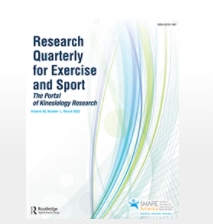Martin M1 2 , Rampinini E1, Bosio A1, Azzalin A3 4, McCall A5 , Ward P6
1, Mapei Sport Research Centre, Olgiate Olona, VA, Italy; 2, Bangor University; 3, Ukrainian Association of Football; 4, University of Verona; 5, Arsenal Football Club, 6, Seattle Seahawks

ABSTRACT
Purpose: Understanding the dose-response relationship between internal and external training load with changes in aerobic fitness and intermittent running capacity, during different periods of the season, may help in optimizing training process. The aim of the present study was to investigate the dose-response relationships between load measures and changes in aerobic fitness and intermittent running capacity among a large cohort of professional soccer players. Methods: Training load, aerobic fitness and intermittent running capacity of 52 male adult professional players from 3 elite teams were monitored across an entire season and analyzed employing linear mixed models, with a significance level set at p≤0.05. Results: Relationships between load measures (training and match duration, sRPE-TL, total distance, high and very high-speed running distances) and changes in physical qualities were stronger during the preparation period (PREP) for both aerobic fitness (d= 0.48 to 0.76, p<0.031) and intermittent running capacity (d= 0.46 to 1.89, p<0.046). The magnitude of the relationships reduced during the first competitive period (d= 0.43 to 0.56) and the relationships became trivial in the second competitive period (d= 0.06 to 0.41, p= 0.063 to 0.846). Conclusion: The moderate to large relationships found between all measures of load and changes in physical capacities suggest that training prescription during the PREP was effective in improving players’ fitness. During the competitive phase small changes in aerobic and intermittent running capacities were found, highlighting that coaching staff pursue different aims during the competitive period, such as technical and tactical training and recovery.
Res Q Exerc Sport. 2022 Apr 29;1-13. Online ahead of print
PMID: 35486417 DOI: 10.1080/02701367.2022.2053646